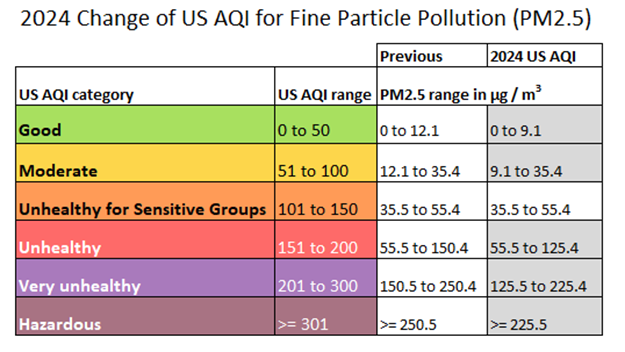
On May 6th the U.S. Environmental Protection Agency rolled out a change to the Air Quality Index (see table above). We didn’t receive notification of this until yesterday. These modifications are now live on the website — both in current conditions and in the weather history tables effective July 19, 2024.
Keep in mind, we apply an EPA correction factor to the AQI reading. If you visit other air quality websites or apps, the readings may seem incorrect if, by default, they report raw AQI. The most accurate way to compare our sensor readings to others nearby is to visit https://fire.airnow.gov/. Click the search icon, type in “Marquette, MI” and hit enter.
Why do we correct the AQI? Because researchers at the EPA discovered that by applying an algorithm to our “low-cost” (~$400) PurpleAir sensor its readings better approximate the higher-cost, more accurate government sensor readings. Experiments were conducted within the context of wildfire smoke pollution — the thing people are most concerned about here.
